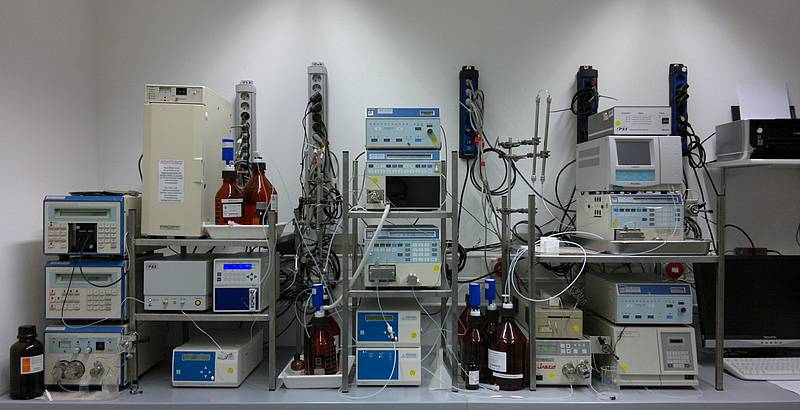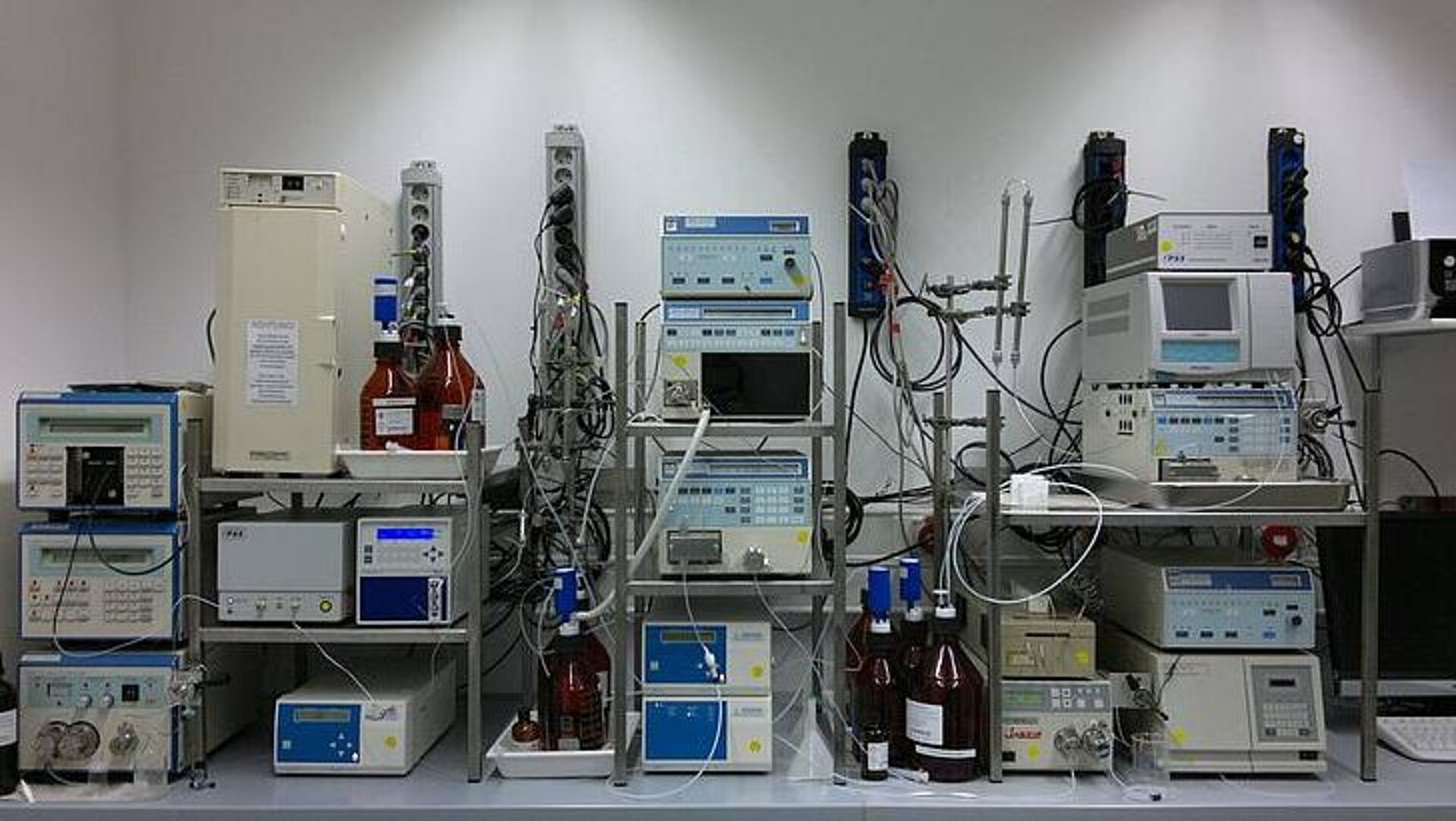gel permeation chromatography (GPC)

Size exclusion chromatography (SEC) is capable of separating macromolecules or colloidal particles according to their size in solution or colloidal dispersion (the so-called hydrodynamic volume). By applying a suitable calibration function the chromatogram can be converted into a molar mass distribution. The calibration can be carried out either with suitable polymer standards of known chemical structure and molar mass or by using the Kuhn-Mark-Houwink equation (universal calibration). Thus, SEC represents a relative method for the determination of the molar mass distribution and its characteristic parameters (average molar masses, dispersity).
Service
There are 4 different modular SEC systems available in the research group of Prof. Kuckling. These systems are operated with different solvents, namely tetrahydrofuran (THF), chloroform (CHCl3), N,N-dimethylacetamide (DMAc) and hexafluoroisopropanol (HFIP). With these systems, SEC analysis of polystyrene and its derivates, polyacrylates, polymethacrylates, polyacrylamides, polymethacrylamides as well as different polyesters and polyamides is possible.
As a routine SEC analysis we offer relative molar mass determination based on calibration with polystyrene, polymethylmethacrylate ore poly(2-vinylpyridine) standards. Beyond that, for more specific SEC measurements please contact Prof. Kuckling or Dr. Artjom Herberg.
Overview of available SEC systems in the research group of Prof. Kuckling
| GPC-Anlage 1 | GPC-Anlage 2 | GPC-Anlage 3 | GPC-Anlage 4 | |
|---|---|---|---|---|
| Eluent | THF | CHCl3 | DMAc | HFIP |
| Trennsäulen | PSS-SDV 105Å PSS-SDV 103Å | PSS-SDV 106Å PSS-SDV 105Å PSS-SDV 103Å PSS-SDV 102Å | PSS-GRAM 104Å PSS-GRAM 103Å PSS-GRAM 102Å | PSS-PFG 103Å PSS-PFG 102Å |
| Detektoren | Knauer RI 2300 Merck L4200 | Shodex RI 101 Merck L4000 | Waters RI 2410 Merck PDA-L3000 PSS ETA 2010 PSS SLD 7000 | Shodex RI 101 |
| Interface | PSS Universal Data Center UDC 810 | |||
| Software | PSS WinGPC Unity | |||
| Standards | PS, PMMA, P2VP | PMMA | ||
| geeignet für | Poly(styrole) Poly(acrylate) Poly(methacrylate) Poly(acrylamide) Poly(p-phenylene) | Poly(styrole) Poly(acrylate) Poly(methacrylate) Poly(carbonate) Poly(lactide) | Poly(styrole) Poly(acrylate) Poly(methacrylate) Poly(acrylamide) Poly(vinylalkohole) Poly(vinylester) | Poly(acrylate) Poly(acrylnitrile) Polyester Polyamide |
Contact

Research and Teaching
Office: J3.205
Phone: +49 5251 60-2175
E-mail: artjom.herberg@uni-paderborn.de

Head of Institute - Professorship for Organic and Macromolecular Chemistry
Office: J3.310
Phone: +49 5251 60-2171
E-mail: dirk.kuckling@uni-paderborn.de
